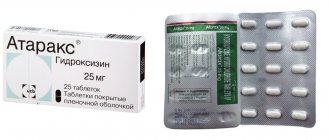What kind of medicine is metronidazole?
The drug metronidazole belongs to the type of active antimicrobial drugs with a spatial range of action for the permanent treatment of infectious diseases caused by parasites and anaerobes.
The action of the drug in tablets is based on reducing the degree of oxidation of the 5-nitro group by proteins of anaerobes and parasites. The altered 5-nitro group acts with the deoxyribonucleic acid of organisms, inhibiting the union of enzymes, which leads to the destruction of single-celled organisms. Successfully fights vaginal infections, amoebiasis, bacterial vaginosis, intestinal giardiasis, parasites, as well as anaerobes.
When interacting with the antibiotic amoxil, metronidazole is more active against the bacterium that causes stomach and duodenal ulcers.
Metronidazole - the use of which has an effect on parasites and various types of microorganisms and has antibacterial and antiparasitic activity.
Due to the fact that aerobes are not subject to the direct action of metronidazole, but if a combination of anaerobic and aerobic microorganisms is detected, the effect of metronidazole with antibiotics is successful. Metronidazole facilitates radiation therapy and activates the self-healing activity of cells.
Metronidazole is used for the treatment of bacterial vaginosis. The cause of this pathology is a disruption of the vaginal ecosystem and activation of the growth and reproduction of both obligate anaerobes and Gardnerella spp. This microaerophile associates well with obligate anaerobes.
Inhibition of the growth of Gardnerella spp. is largely a consequence of the normalization of the vaginal biocenosis as a result of the suppression of the proliferation of anaerobes. However, a direct direct effect of metronidazole on Gardnerella cannot be excluded, especially in the case of strains with a fairly high sensitivity to 5-NIMZ. There is positive experience in the use of other 5-NIMZ in the treatment of bacterial vaginosis.
Analogs
Due to the frequent occurrence of side effects from metronidazole, its analogues are prescribed. The most famous of them is Trichopolum, which is highly effective and prescribed in similar dosages.
Metronidazole can also be replaced with drugs similar in structure:
Patients respond positively to a relatively new drug - macromiror, which has a similar effect, but, unlike Metronidazole, is well tolerated. However, doctors rarely prescribe it due to its high cost.
Composition and release form of the drug metronidazole
Metronidazole - external use in the form of a cream, vaginal gel, vaginal suppositories, vaginal tablets, powder for the preparation of solution for intravenous administration, solution for infusion, suspension for oral administration, tablets, film-coated tablets.
Active ingredient:
Metronidazole is available in the form of yellowish-green flat-cylindrical, chamfered and scored tablets. One tablet contains 0.25 g of metronidazole.
Metronidazole is produced in the form of a cream for external use, 1 g of which contains 0.01 g of metronidazole.
Metronidazole is produced in the form of intravaginal suppositories of a white and yellow elongated shape. 1 suppository contains metronidazole 0.125g, or 0.25g, or 0.5g.
Metronidazole is available as a 0.5% greenish solution for injection. 1 ml of solution contains 5 mg of metronidazole.
Additional substances: in tablets – potato starch, cetylacetic acid, steatite. The cream contains propanetriol, petroleum jelly, emulsion wax, propanediol, nipagin, para-hydroxybenzoic acid propyl ester sodium salt, sterile water. In candles - polyethylene glycol 400, polyethylene glycol 1500. In solution - sodium dihydrogen phosphate, citric acid, sodium chloride, purified water.
Packaging of the drug Metronidazole: one blister contains 10 tablets. 1 tablet contains 0.25 g of metronidazole. 1% cream is in a 25 g tube. 1 g of cream contains 10 mg of metronidazole. There are 7 vaginal suppositories in 1 blister pack. 1 suppository contains 500 mg of metronidazole. 1 infusion bottle contains 10 ml of solution. 1 ml of solution contains 5 mg of metronidazole. 1 ampoule of injection solution 0.5% contains 20 ml of the drug. 1 ml of solution contains 5 mg of metronidazole.
What does it help with?
In gynecology, the gel is used for trichomoniasis and nonspecific vaginitis of various origins. The medicine can also be used to treat rosacea (rosacea), demodicosis (incl.
in animals), seborrhea, eczema, long-term non-healing skin lesions (wounds, trophic ulcers, burns, bedsores), external hemorrhoids, anal fissures.
The drug in gel form can also be found in the dental office. The medicine is used to eliminate gingivitis, periodontitis, periodontal disease, stomatitis, as well as after tooth extraction (to prevent the development of complications).
The medicine is used to eliminate gingivitis, periodontitis, periodontal disease, and stomatitis.
Pharmacological action of the drug metronidazole
Antiprotozoal and antimicrobial drug, a derivative of 5-nitroimidazole. Metronidazole - application and mechanism of action is the biochemical reduction of the 5-nitro group by intracellular transport proteins of anaerobic microorganisms and protozoa.
The reduced 5-nitro group interacts with the DNA of the microbial cell, inhibiting the synthesis of their nucleic acids, which leads to the death of bacteria.
Active against Trichomonas vaginalis, Entamoeba histolytica, Gardnerella vaginalis. Giardia intestinalis, Lamblia spp., as well as obligate anaerobes Bacteroidcs spp. (including Bacteroides fragilis, Bacteroides distasonis, Bacteroides ovatus, Bacteroides thetaiotaomicron, Bacleroides vulgatus), Fusobacterium spp., Veillonela spp., Prevotella (P.bivia, P.buccae, P.disiens), and some gram-positive microorganisms ( Eubacterium spp., Clostridium spp., Peptococcus spp., Peptostreptococcus spp.).
Aerobic microorganisms and facultative anaerobes are not sensitive to metronidazole, but in the presence of mixed flora (aerobes and anaerobes), metronidazole acts synergistically with antibiotics that are effective against common aerobes.
The minimum inhibitory concentration for these strains is 0.125-6.25 μg/ml. In combination with amoxicillin, it is active against Helicobacter pylori (amoxicillin suppresses the development of resistance to metronidazole).
Increases the sensitivity of tumors to radiation, causes sensitization to alcohol (disulfiram-like effect), stimulates reparative processes.
General information about the drug
The active ingredient is Metronidazole 250 mg. The medicine is available in white tablets and in the form of a gel and solution for infusion.
How does Metronidazole affect the body and what does it help with? A distinctive feature is the rapid penetration of the active components into the cell, as well as tissues and internal organs. The medicine, penetrating inside the body, begins to interact with the DNA of the cells that caused the disease. The spread of infections is stopped.
Since the active substances of Metronidazole harm only bacterial cells, the human body does not suffer. To achieve results, high doses of medication are often prescribed. If necessary, the dosage is reduced. The tablets are not a food supplement.
The drug penetrates almost completely into the blood. After just a couple of hours, the effect of the treatment composition is observed. The highest concentrations are observed in saliva, genital secretions, lungs, skin, liver and brain. After 7 hours, the drug is almost completely excreted in the urine.
The drug is dispensed in pharmacies only with a doctor's prescription. The shelf life varies from manufacturer to manufacturer and can be 3 or 5 years. The average price for the drug in tablet form is about 100 rubles.
Pharmacokinetics of the drug metronidazole
Metronidazole - application in tablets reaches 80% due to good penetration. Reaches sufficient concentrations in the cells of the body. Found in lung tissue, kidneys, liver, skin, bile, brain, vaginal secretions, seminal fluid, and breast milk. The drug overcomes the intercellular and placental barriers.
From 30% to 60% of the drug enters into metabolism in the body. The main intermediate product of metabolism acts specifically against parasites and microbes.
The drug is excreted up to 80% by the kidneys and up to 15% by the gastrointestinal tract. For patients suffering from kidney disease, it is recommended to reduce the standard dose. Hemodialysis can easily remove metronidazole from the blood.
When using metronidazole vaginally, the drug is partially absorbed, in a minimal amount (about 1.4%). The proportion of absorbed medication in the case of intravaginal use reaches 20% when compared with taking tablets. Approximately 20% of the dose is excreted by the excretory organs.
In the case of intravenous infusion, the drug, crossing the placenta, is found in the lungs, bile, liver, kidneys, brain, bone tissue, cerebrospinal fluid, urethral and vaginal secretions, and breast milk. Synthesis with proteins reaches 20%. Processed in the liver.
Excretion from the body occurs through the kidneys. The half-life of metronidazole is seven hours. In case of impaired liver and kidney activity, a slower half-life of the drug may occur. In the case of secondary use of metronidazole, its concentration in the body increases.
Metronidazole gel price
The answer to this question is very simple. The thing is that this is a more modern dosage form that is becoming increasingly popular, and there are reasons for this. The active substance is released from the gel more easily than, for example, from the same tablets.
After all, the tablet (as well as the suppository) must first dissolve in the secretory fluid, only after that the drug begins to act on microbes.
And from the gel form, it enters the vaginal secretion much faster and in large quantities and begins to exert its effect. Therefore, the dosage of the drug is also reduced: for tablets it is 500 mg, and for the gel form it is only 50 mg.
Therefore, the price is appropriate:
- for Russia the price is about 100 rubles per 30 gram tube,
- for Ukraine the price is slightly less. This is about 20 hryvnia,
- for other CIS countries the price also varies within these limits ($3.5).
Another advantage is the presence of an applicator, which makes it easier for many women to administer the product. Hard tablets, on the contrary, can scratch the delicate mucous membrane.
Metronidazole gel instructions for use
Now I will list the main points that the metronidazole gel contains instructions for use.
- Indications for use: look at the article with the same title “indications for use”, section on diseases of the genitourinary system.
- Directions for use: 2 times a day, 5 grams. By the way, 5 g is easy to measure - this is a whole applicator. The course of treatment usually lasts 5 days.
- Side effects and contraindications: when used vaginally, almost half of the medicinal substance enters the bloodstream, so the woman becomes intolerant to alcohol, and a wide variety of side effects may also appear (see more details here). Although I would like to note once again that the gel form is the safest dosage form.
- Use during pregnancy is extremely limited. But if the doctor nevertheless prescribed this remedy, then do not use the applicator for administration.
- Special side effects: itching, burning in the vaginal area, specific discharge, increased urination, development of candidiasis. During sexual intercourse, irritation and a burning sensation may occur in the partner's penis.
Metronidazole for thrush
The official name of the disease, which we simply call thrush, is candidiasis. It comes from the most common pathogen - a fungus from the genus Candida. Let me remind you of two facts:
- the remedy we are now considering acts on both bacteria and protozoa;
- Side effects include candidiasis.
Now you can conclude for yourself that metronidazole will not help with thrush. Antifungal drugs are used to treat thrush. There are also combination drugs that include our healing substance and an antifungal agent, which enhances its effect on mixed infections and prevents the addition of candidiasis.
Now you know that the price for metronidazole gel is quite fair and justified, since it has advantages over other forms.
Use of metronidazole tablets
Metronidazole tablets should be used exclusively for the treatment of infectious processes caused by metronidazole virus cultures (according to the results of biological analysis or epidemiological indicators):
- trichomoniasis; amoebiasis; anaerobic bacterial infections; infections of the skin and appendages; gynecological infections (including endometritis, endomyometritis, tubo-ovarian process, infections after gynecological operations);
- bacterial septicemia; bone and joint infections;
- infections of the central nervous system, including meningitis, brain abscess, lower respiratory tract infections, pneumonia, empyema, lung abscess, endocarditis.
Drug interactions
During the treatment of serious infectious processes in gynecology, it is necessary to use various drugs, so you need to find out their interaction with Metronidazole:
- If it is taken together with anticoagulants, their effect is enhanced. Here you need to be especially careful not to disrupt the functionality of the cardiovascular system;
- Metronidazole increases lithium levels, so a person may experience symptoms of intoxication. This is unacceptable in gynecology. These symptoms interfere with the true signs of pathology;
- If a woman uses antiepileptic drugs, they reduce the effectiveness of the antibiotic in gynecology. Sulfacylamides, on the contrary, enhance its effect;
- The combination of Metronidazole and Amoxicillin is not suitable for use in patients under 18 years of age;
- The presented product should not be used in conjunction with Carbamazepine, as the concentration of the latter increases and side effects develop;
- With the simultaneous use of phenobarbital, Metronidazole is eliminated from the body faster, so its effect in gynecology may be reduced. Antacids can reduce its absorption.
If women are prescribed Metronidazole for gynecological diseases, they should not drink alcohol. Ethanol is incompatible with this antibiotic. A person develops increased sensitivity to this substance.
Gynecological diseases are unpleasant and dangerous for a woman, as they can significantly harm her health and lead to the development of infertility. It is necessary to fight inflammatory processes, as well as infections that affect the reproductive system, with Meironidazole only after a thorough diagnosis. Any antibiotic should be taken only with the permission of the attending physician.
Sources:
Vidal : https://www.vidal.ru/drugs/metronidazole__18699 GRLS : https://grls.rosminzdrav.ru/Grls_View_v2.aspx?routingGu >
Found a mistake? Select it and press Ctrl + Enter
The drug Metronidazole: what helps women? This is a rather interesting topic, because this medication is used quite often. The product is classified as antiprotozoal. The medicine also has antibacterial activity.
Metronidazole is actively used in the postoperative period and for various diseases. The scope of application of the drug is quite wide, despite its low cost. When the question arises about whether Metronidazole or Trichopolum is better, the answer should be unequivocal. There is no difference in both medications. It's the same thing, except for the name and price.
In medical institutions, Metronidazole is always used for treatment, since it is the cheapest and most practical. Which drug to treat is up to the patient to choose. Recent clinical studies have shown that unwanted side effects may occur when taking this therapy. An unpleasant taste appears in the mouth and slight pain in the epigastrium.
How to be treated with metronidazole
Metronidazole - for use in adults and children over twelve years of age, administered intravenously in an amount of 100 ml over 30 minutes (5 ml/min) every eight hours. For patients suffering from kidney disease, the intervals between administrations should be twelve hours. For patients suffering from severe liver disease, it is necessary to monitor the amount of metronidazole in the blood.
If the drug concentration is high, reduce the recommended daily dose. To prevent anaerobic infections during operations, 100 ml of the drug is administered intravenously before surgery; on the day of surgery and the next day, 1.5 g - 100 ml of medication (500 mg) is administered at eight-hour intervals. The period of therapy with metronidazole should not exceed ten days.
In exceptional cases this period may be extended. It is recommended not to reuse the drug. Antibiotics are administered separately from metronidazole.
For children under twelve years of age, metronidazole is administered intravenously at a dose of 5 ml/min every 8 hours at the rate of 1.5 ml/kg body weight. It is recommended to switch to oral metronidazole as soon as possible.
Metronidazole - taken in the form of tablets orally during or after meals, without chewing. It is possible to take the medicine with milk. When treating trichomoniasis, treatment is selected by the doctor individually. A one-day course of treatment is two grams (eight tablets) at a time, or in two doses of one gram (four tablets) twice a day.
This course of therapy is recommended in cases where there is a suspicion that the patient will not take the intended dose within the specified time interval. A treatment period of seven days, 250 mg (half a tablet) is recommended 3 times a day. The effectiveness of treatment in the latter case is guaranteed to be high.
Metronidazole - for the treatment of amebiasis in adults, it is recommended to take 750 mg (one and a half tablets) orally three times a day for five to ten days. In case of liver abscess - 500 mg or 750 mg 3 times a day for a period of five to ten days. For children, the daily dose is 35-50 mg/kg, calculated for three oral doses over a period of ten days.
When treating severe anaerobic bacterial infections, the drug is recommended at the very beginning of treatment. The oral dose for adults is 7.5 mg/kg at 6-hour intervals. The highest dose per day is 4 g. The treatment period is from seven to ten days. In the case of treatment of infections of the joints and bones, lower respiratory tract and endocardium, the period may be extended.
Metronidazole - used in the treatment of elderly patients. In this case, the treatment regimen may undergo some changes. It will be necessary to monitor the concentration of the drug in the blood to adjust the dose. In patients with severe liver diseases, the concentration of metronidazole in the blood is observed, and therefore its rate should be reduced.
Close monitoring of metronidazole concentrations in the blood and signs of poisoning is necessary. In case of complete cessation of urine flow into the bladder, it is not recommended to reduce the dose of the drug because metronidazole and its components are removed during dialysis.
Metronidazole in gel form is recommended for local, external use. The gel is applied to previously cleaned infected areas of the mucous membrane or skin in a small layer at intervals of 12 hours in the morning and evening. The effectiveness of treatment is established 20 days after using the medicine. The course of therapy ranges from one to four months.
Metronidazole suppositories are administered into the vagina with a single dose of 2 g or 500 mg twice a day in the morning and evening for ten days. During the treatment period, sexual intercourse is not recommended.
Possible side effects
Improper use of the tablet form of Metronidazole or overdose of the drug leads to side effects. The following symptoms appear:
- nausea;
- iron taste in the mouth;
- swelling and pain;
- constipation or diarrhea;
- dry mouth;
- decreased appetite;
- skin redness;
- drowsiness and weakness;
- dizziness;
- insomnia;
- stomatitis:
- convulsions;
- nasal congestion.
When using gel, suppositories and IV concentrate, the following side effects occur:
- thirst;
- increased excitability;
- impaired coordination of movements;
- confusion;
- diarrhea;
- nausea;
- stomach ache;
- burning during urination;
- skin rash;
- dry mucous membranes;
- painful sensations in joints and muscles.
Metronidazole in the fight against bacterial vaginosis
Bacterial vaginosis is a very common disease, which in medicine is often called polyetiological nonspecific vaginitis. This disease occurs as a result of exposure of a woman's body to a bacterium called Gardnerella vaginalis.
In some cases, other anaerobic microorganisms also become the cause of the development of this disease. Bacterial vaginosis is a disease that is characterized by a clear decrease in the number of lactobacilli. As a result, serious changes in the vaginal microflora are observed.
Metronidazole is used for the treatment of bacterial vaginosis in the form of a drug in the form of suppositories and gel. Metronidazole gel should be used before going to bed. The course of treatment is five days, but suppositories also need to be administered at night for five to seven days.
Very often this disease is also accompanied by such an ailment as candidal colpitis. To treat this disease, medical specialists most often prescribe a drug called metronidazole. This pharmaceutical drug is available in several pharmaceutical forms.
As a rule, in the fight against this disease, metronidazole is prescribed to patients along with many other medications. This is explained by the fact that the treatment of bacterial vaginosis must be comprehensive. Some special dietary supplements (dietary supplements) are considered to be effective in combating various gynecological diseases of an infectious nature.
Rules for using the product
If it is clear what Metronidazole treats women for, then now we should consider the features of using its different forms.
So, you need to take the remedy like this:
- Pills . They are used most often in gynecology, as they give the fastest possible effect. But here we must not forget that any oral antibiotics disrupt the intestinal microflora and have a systemic effect on the body. The patient needs to take 250-750 mg of the drug up to 4 times a day. Before surgery in gynecology, to prepare the body, you need to take 500 mg of the drug three times a day. After the procedure, Metronidazole can also be used to prevent complications and the development of an infectious process, but its dosage depends on many circumstances;
- Solution for intravenous injection . Metronidazole is administered every 8 hours. A single dosage is 500-750 mg;
- Vaginal suppositories . They are considered the most optimal form for the treatment of various infections of the female reproductive system. They are administered once a day before bedtime. The most common dosage is 500 mg. The suppository should be inserted deep into the vagina. After the procedure, hands should be washed. It is also important to maintain a horizontal position after using this form of medication for several hours. The duration of treatment is 7-10 days. Before insertion, the candle should be slightly moistened with water;
- Vaginal gel . In gynecology, it is used to lubricate the affected tissues inside. There is a form for external use.
Metronidazole - use in gynecology
This remedy is a very popular antimicrobial and antibacterial medicine. It is used to treat skin diseases, correct respiratory tract infections and so on. The drug "Metronidazole" is very widely used in gynecology.
It is worth noting that the product can perfectly fight many pathogenic microorganisms. However, its use will be completely useless in the treatment of fungal infections and diseases of viral origin. That is why it is worth first finding out what is the causative agent of the pathology.
Metronidazole is used in gynecological practice when it is used as an antibacterial remedy in the fight against infections in women. The specialist prescribes the drug, according to the indications for use, for the treatment of: endometritis; infections of the vaginal vault; fallopian tube abscess; ovarian infections; trichomoniasis; trichomonas vaginitis; bacterial vaginitis; urethritis; ovarian abscess.
It is often advisable to use Metronidazole to prevent inflammatory processes in the postoperative period. The effectiveness of the drug in therapeutic measures for the treatment of septic diseases in obstetrics and gynecology has been proven through many years of medical experience.
It is worth noting that in each case a separate dosage and treatment regimen are selected. You should never deviate from your appointments on your own. Otherwise, you may not only not get a positive result, but also cause complications.
special instructions
Metronidazole is an antibiotic that should not be combined with ethanol. Otherwise, serious side effects may occur. In patients with leukopenia, the likelihood of using the drug for treatment depends on whether there is a risk of developing an infection.
Metronidazole should not be combined with amoxicillin when treating children and adolescents under 18 years of age. When taking the drug, a false-positive Nelson test may occur, which should be taken into account when using Metronidazole for thrush and other diseases.
When used externally, it is important to apply the product completely to the entire area affected by the disease. The gel does not leave greasy stains on clothes and skin
When using the product externally, it should be noted that if it gets into the eyes, the gel or cream can cause lacrimation. If this happens, it is important to immediately rinse your eyes with plenty of water.
It is important to abstain from sexual activity if trichomonas vaginitis and urethritis are being treated. It is very important to treat both partners at the same time
Treatment should not be suspended during menstruation.
If treatment is carried out over a long period of time, it is important to carefully monitor laboratory blood values. It is important to immediately stop treatment if the patient experiences dizziness, ataxia, or worsening neurological status
Features of use during pregnancy and lactation
According to the instructions supplied with the medicine, Metronidazole belongs to category B, which means restrictions on use during pregnancy and lactation.
Metronidazole quickly crosses the placental barrier. In the early stages of pregnancy, the use of this drug is prohibited. If vital indications require drug therapy, the pregnancy is terminated.
During the 2nd and 3rd trimesters of pregnancy, the advisability of using Metronidazole should be determined by health conditions.
Since the active substance of the drug is excreted in breast milk, there is a need to temporarily stop lactation.
Reviews
It cannot be said that reviews of metronidazole are exclusively positive or negative. Among the positive aspects, patients note:
- effective therapy;
- low cost;
- wide spectrum of action.
Metronidazole tablets helped perfectly even with a sore throat. However, despite the rapid cure, many side effects occur. Mostly patients complain of:
- the appearance of drowsiness, lethargy, confusion;
- rapid pulse, palpitations;
- metallic taste in the mouth;
- nausea, vomiting.
After the onset of such conditions, the medication was usually stopped on the initiative of the doctor.
Metronidazole is an effective drug. But you should know exactly what it helps with, and take it only as prescribed by a doctor. Self-medication threatens the appearance of many side effects and the development of new diseases against their background. Only strict adherence to the instructions will help cure the disease.
Overdose
The medicine is intended for topical use.
For gynecological diseases, the gel is used intravaginally twice a day (evening and morning). A single dose is 5 g, which corresponds to 1 full applicator.
The recommended duration of therapy is 5 days. With your doctor's permission, you can use 2 forms of the drug at the same time: ointment and tablets. You can take higher doses (from 0.75 to 1 g) orally only with the permission of your doctor.
If the patient suffers from skin diseases, the medicine is applied to the entire body area and distributed over it in an even thin layer. If necessary, occlusive dressings are applied on top, which can be made independently from plastic film and rubberized fabric.
Before applying the drug, the skin should be washed or wiped with Chlorhexidine.
After using the drug, the use of non-comedogenic cosmetics and cosmetics that do not contain astringents is allowed.
The product is best used on well-cleaned and dried affected areas of the skin. For these purposes, it is recommended to use an antiseptic solution called Citeal.
These areas should be covered with a very thin layer of ointment without rubbing it in. To completely regenerate the skin, you will need to undergo a course of treatment with Metronidazole ointment.
After 3 weeks, as a rule, positive dynamics are observed.
The ointment is applied daily twice or thrice a day. When using it, it is better to try to avoid skin contact with ultraviolet rays. In addition, there is one more warning - the ointment should not get on human mucous membranes.
The following side effects are possible from an overdose of the drug:
- ataxia;
- nausea accompanied by vomiting;
- allergic reactions in the form of rashes, which may be accompanied by itching and urticaria.
Metronidazole or Chloramphenicol
The drugs Metronidazole and Chloramphenicol (Levomycetin) differ in their therapeutic effect and mechanism. The first remedy has antimicrobial and antiprotozoal properties. The second applies to old antibacterial drugs.
It is possible to use medications for dysentery. Which is better depends on the type of pathogen.
General characteristics of Trichopolum
As mentioned earlier, Trichopolum is an antimicrobial agent related to antiprotozoal drugs. It is made on the basis of Metronidazole, which is widely used to treat helminth infestations, destroy microorganisms and anaerobic bacteria:
- Vionell.
- Clostridium.
- Fusobacterium.
- Peptococcus.
- Bacteroid.
- Peptostreptococcus.
When the active substance Trichopolum penetrates the body of an infected person, it affects the genetic system of microorganisms, blocking their synthesis and leading to death.
Trichopolum is available in tablet form intended for oral use. Consequently, after taking the medicine, the tablet penetrates the digestive system and begins to fight the pathogen. 2 hours after application, Trichopolum is distributed to:
- Fabrics.
- Organs.
- Systems of the human body.
- Biological fluids.
- Concentrated in the blood.
Also, Trichopolum is available in the form of vaginal tablets. They are designed to destroy microorganisms in the female reproductive system. The principle of action of vaginal tablets is similar to oral use. However, in this case, the bulk of metronidazole does not spread throughout the body, but remains in the area of the internal genital organs.
Side effects
After conducting numerous clinical studies, it was found that the drug is well tolerated by people infected with protozoan parasites and anaerobic bacteria. However, in rare cases, Trichopolum can cause the following side effects:
- Allergies.
- Diarrhea or constipation.
- Dizziness.
- Headache.
- Nausea.
Contraindications to the use of Trichopolum
Considering the scale of the impact and the route of distribution of the drug throughout the body, Trichopolum is prohibited for patients under the following circumstances:
- During pregnancy.
- Lactation.
- Kidney failure (they may not be able to remove the drug from the body).
Consequently, this drug is strictly prohibited for use for preventive purposes, as well as without prescription by a specialist.
How it works
Metronidazole belongs to the group of antiprotozoal and antimicrobial drugs. It is a derivative of 5-nitroimidazole. This substance, especially in the form of an ointment, freely penetrates into the intracellular environment of microorganisms and interacts with its proteins. The product of the process is reduced metronidazole, which shows tropism for the parasite DNA molecule.
As a result of their interaction, the synthesis of new nucleic acid molecules stops and bacterial cells stop reproducing. Therefore, Metronidazole for acne of an infectious nature is, as a rule, the drug of primary and most common choice by specialists.
The price of Metronidazole starts from 78 rubles in Moscow, up to 100 rubles in the regions of Russia.
Metronidazole tablets are effective against:
- Entamoeba histolytica;
- Lamblia spp.
- Bacteroides spp;
- Clostridium spp;
- Trichomonas vaginalis, Gardnerella vaginalis (the most common causative agents of sexually transmitted diseases; acne gel with metronidazole is used for treatment).
When used for topical treatment, it has proven to be very effective. However, the exact mechanism of action of Metronidazole against acne remains unknown. It is reliably known that the active substance does not in any way affect the intensity of sebum synthesis by dermal cells. Despite its effectiveness against demodicosis, it does not have a direct effect on the tick that causes the disease. Based on the results of numerous clinical studies, it turned out that the gel for external use affects the function of blood phagocytes. It leads to a decrease in their ability to release atomic oxygen, which ultimately has an antioxidant effect. It is with this effect that the benefit of the drug for demodicosis is associated.
Indications for prescribing ointment
Ointments, gels and creams containing metronidazole are used to treat skin diseases. The list of indications includes:
- rosacea;
- burns;
- demodicosis;
- trophic ulcers with varicose veins;
- deperioral dermatitis;
- necrotic processes due to diabetes;
- acne;
- infectious skin lesions;
- eczema.
The drug is insufficiently effective in correcting rashes due to hormonal imbalances and rashes caused by problems with the gastrointestinal tract.
Contraindications for use
If your doctor has prescribed Metronidazole for acne, there are many options for its use. In severe conditions, when systemic action of the drug is required, tablets are used.
It is logical that patients with serious illnesses undergo exclusively inpatient treatment. Therefore, medical personnel will monitor how to take the drug.
In the case of a milder course of the disease, when there are no other manifestations other than skin ones, local treatment is used. According to the instructions for use of the drug, it should be applied to the affected areas of the skin, regardless of the form of release, twice a day with equal time intervals between procedures.
Metronidazole cream has the advantage that the base provides rapid absorption, and within a few minutes after use it does not leave noticeable marks. Therefore, using the substance on the face is completely acceptable.
The only exception is the area around the eyes. Here the skin is very thin and rich in blood vessels that pass through the eye socket. When applying the substance in this area, lacrimation may occur.
If acne affects closed areas of the skin, then after treatment with the drug, you can wrap them in film and natural fabric, leaving them for several hours.
An ointment is suitable for such purposes. The disadvantage of the base substance is that it contains a large amount of fat. This is inconvenient in the sense that it can lead to damage to clothes.
Considering that Metronidazole is a necessary drug for treatment, its use in other forms of release is required. In this case, it is better to choose the medication in the form of a gel, since this form of release is made on a water basis.
There are no special contraindications for topical use of the drug. The instructions for use only contain a mention that the drug cannot be used if you are intolerant to its components.
It should be remembered that with prolonged application over large areas of the skin, a resorptive effect is possible. That is, the drug enters the bloodstream. Therefore, it is necessary to use ointment and other forms of release with caution during pregnancy.
The medicine is not used for the following conditions:
- individual intolerance to nitroimidazole derivatives;
- hypersensitivity to substances contained in the drug;
- impaired coordination of movements;
- liver failure (when using high doses);
- breastfeeding;
- organic lesions of the central nervous system, including epilepsy;
- leukopenia (including previously suffered);
- carrying a child (within 3 months from the moment of conception).
In case of individual intolerance to nitroimidazole derivatives, the drug is not allowed to be used.
If coordination of movements is impaired, the medicine is prohibited.
Organic lesions of the central nervous system indicate that the drug should also not be used.
The medicine is used with caution from 4 to 9 months of pregnancy.
Gynecological diseases
Metronidazole is used to treat many gynecological diseases, because women suffer from sexually transmitted infections much more often than men due to the physiological characteristics of the body. Women should undergo regular medical examinations with a gynecologist 2 times a year. When identifying genital tract infections, doctors recommend medications that include metronidazole, namely cream, gel and suppositories.
Metronidazole is used in gynecology in the following cases:
- when parasites penetrate the genital tract;
- with inflammation of the ovaries;
- with inflammation of the fallopian tubes and uterus;
- for the treatment of urethritis, cystitis, as well as vaginitis;
- to restore vaginal microflora;
- for the treatment of sexually transmitted infections.
Infections and diseases affecting the reproductive system should be treated until complete recovery in order to avoid complications that can lead to infertility. Metronidazole can be used during menstruation.
Conditions for dispensing from pharmacies
Store the drug in a dry place, protected from light, at a temperature not exceeding 25°C. Keep out of the reach of children. Shelf life – 2 years. Do not use after the expiration date stated on the package.
The drug is available with a prescription.
Gel, suppositories, cream and other dosage forms of the drug are available from pharmacies with a prescription.
What is the price?
The price of the drug in Russia is 100-150 rubles.
The air temperature in the room where the medicine is stored should not exceed 25°C. Freezing the drug is prohibited. During the shelf life, the gel must be in its original packaging.
The air temperature in the room where the medicine is stored should not exceed 25°C.
Best before date
The medication can be used within 24 months from the release date indicated on the box.
Pharmacodynamics
Refers to broad-spectrum drugs. Effective against anaerobic bacteria and protozoa:
- gardnerella;
- dysenteric amoeba;
- intestinal lamblia;
- eubacteria;
- bacteroides;
- clostridia;
- Trichomonas;
- peptococci;
- Veillonella;
- peptostreptococci;
- clostridia.
It is distinguished by its powerful resistance to Trichomonas - 9 out of 10 die on the first day of therapy. Does not affect aerobic bacteria and the causative agent of demodicosis.
It affects acne, but the mechanism is not fully understood. Destroys neutrophils, which secrete antioxidants and destroy tissue in the area with ongoing inflammatory process.











